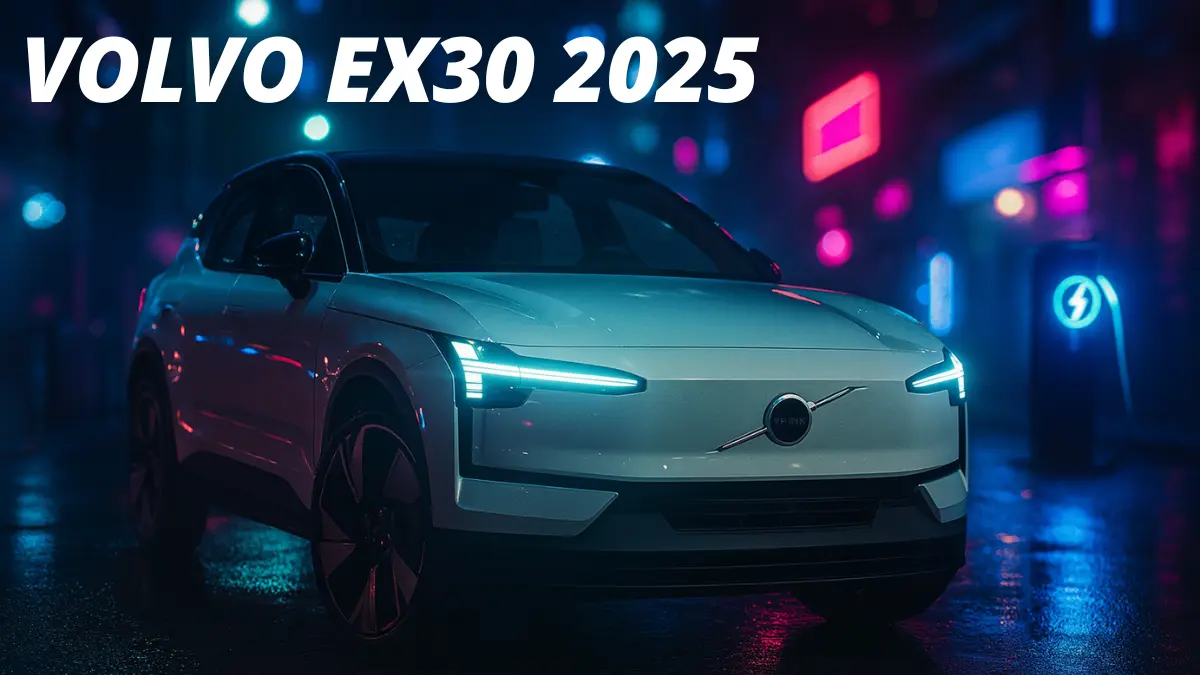Volvo Cars has officially unveiled the all-new 2025 Volvo EX30 in India, marking the brand’s third electric vehicle for the market and its first ground-up EV. Built on the SEA2 platform from parent company Geely, the EX30 aims to attract a younger audience while competing with premium mainstream EVs in the sub-₹50 lakh segment.
Bookings for the EX30 will open on August 20, 2025, with prices set to be announced in September, followed by customer deliveries starting October 2025.
Design: Minimalist, Modern, and Youth-Oriented
The EX30 follows Volvo’s design philosophy of minimalism and Scandinavian elegance, while adding youthful flair to appeal to first-time premium EV buyers.
- Front Design: The closed-off EV grille is complemented by sharp bonnet creases and the signature Thor’s Hammer LED DRLs, albeit with a refreshed look compared to the XC90 and XC60.
- Side Profile: A unique silhouette balances between the boxy XC40 and coupe-like C40. Dual-tone finishes, 19-inch alloy wheels, and a rising shoulder line add sportiness.
- Rear Profile: Distinctive C-shaped LED tail lamps with intricate detailing enhance visual appeal, though the car appears shorter in height, giving it more of a hatchback stance than a traditional SUV.
Interior: Sustainability Meets Tech-Heavy Minimalism
Inside, the Volvo EX30 embraces sustainability with extensive use of recycled materials instead of leather, wood, or heavy metal trims.
- Central Touchscreen: A 12.3-inch Google-powered vertical display, running on a Snapdragon chip, controls nearly all car functions. Traditional physical buttons are eliminated, creating a steep learning curve for users.
- Infotainment: Wireless Apple CarPlay is supported, but Android Auto remains absent.
- Storage: Clever storage solutions include large door pockets, modular cup holders, and a spacious central console.
- Audio: A unique Harman Kardon soundbar spans the dashboard, replacing traditional door speakers, with a subwoofer mounted behind the dashboard.
- Comfort: While the driver’s seat gets electric adjustment with lumbar and thigh support, the EX30 misses out on ventilated, heated, or massage seats—features usually expected in premium Volvos. A panoramic glass roof is standard, though it lacks a sunshade.
Rear Seat and Practicality: Compromises Evident
The compact footprint and raised battery floor come with trade-offs:
- Rear Space: Taller passengers face knees-up seating and limited legroom. Three adults cannot be seated comfortably.
- No Rear AC Vents: Combined with the glass roof and absence of sunblinds, this could pose issues in Indian summers.
- Boot Space: A 318-litre boot is available, along with a 7-litre frunk (for charging cables). No spare wheel is offered.
Powertrain and Performance of Volvo EX30
The India-spec Volvo EX30 features a 272 hp electric motor producing 343 Nm of torque.
- Acceleration: 0–100 km/h in 5.7 seconds.
- Battery: Uses NMC (Nickel Manganese Cobalt) cells with higher energy density and long life, backed by an 8-year warranty.
- Range: WLTP-certified 480 km, with real-world range expected around 350-360 km.
- Charging:
- 7.4 kW AC charger: 10.5 hours
- 11 kW AC charger: 7 hours
- 150 kW DC fast charger: 0-100% in 25 minutes
Ride quality strikes a balance between firmness and comfort. Steering offers selectable modes—soft, medium, firm—but feedback remains artificial.
Safety and Technology of Volvo EX30
Safety remains a Volvo hallmark, and the EX30 is equipped with advanced driver-assist systems (ADAS):
- Automatic Emergency Braking
- Lane Keep Assist
- Blind Spot Monitoring
- Door Opening Warning for approaching traffic
- Driver Drowsiness Detector that scans eyes, face, and steering movement, alerting drivers with chimes if fatigue is detected.
Market Positioning and Rivals
Expected to be priced around ₹50 lakh (ex-showroom), the 2025 Volvo EX30 will undercut the larger XC40 Recharge and C40 Recharge. It will directly rival:
- BMW iX1
- Mercedes-Benz EQA
- Hyundai Ioniq 5
- Kia EV6
- BYD Seal
The 2025 Volvo EX30 is a bold step into the future for Volvo in India. With its modern design, sustainable interiors, advanced safety features, and competitive pricing, it has strong appeal for urban buyers seeking a premium EV experience. However, limitations in rear passenger comfort and feature omissions mean it will face stiff competition from more spacious and feature-rich rivals in the ₹50 lakh segment.
